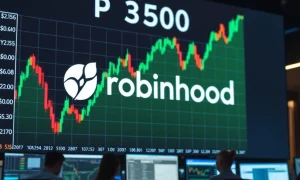Market analysts increasingly warn about a potential stock market bubble forming amid unprecedented valuations and speculative trading. Many investors now question whether current prices reflect reality or speculative excess.
Understanding the Stock Market Bubble Phenomenon
Historically, stock market bubbles occur when asset prices rise dramatically above intrinsic values. Consequently, investors grow concerned when certain indicators flash warning signals. Currently, several metrics suggest potential overheating in equity markets.
Key Indicators Pointing to Bubble Conditions
Several factors contribute to bubble concerns. First, valuation metrics reach extreme levels. The Shiller P/E ratio, for instance, currently exceeds historical averages. Second, speculative trading activity has surged dramatically. Additionally, margin debt levels hit record highs recently.
Critical warning signs include:
- Elevated price-to-earnings ratios across major indices
- Record-high margin debt levels among investors
- Increased retail trading and speculative activity
- Divergence between economic fundamentals and market performance
Federal Reserve Policy and Market Dynamics
Monetary policy significantly influences market conditions. Furthermore, low interest rates historically fuel asset price inflation. Currently, accommodative policies continue supporting markets. However, investors worry about eventual policy normalization.
Historical Patterns and Current Parallels
Market historians note similarities with previous bubbles. Specifically, the dot-com era and housing bubble show comparable patterns. Meanwhile, current technology valuations particularly concern many analysts. Nevertheless, some experts argue this cycle differs fundamentally.
Investor Psychology and Herd Behavior
Behavioral factors often drive bubble formation. Typically, fear of missing out overwhelms rational analysis. Subsequently, investors chase performance regardless of valuation. This psychological dynamic currently appears prevalent in markets.
Potential Triggers for Market Correction
Several catalysts could deflate the perceived stock market bubble. Interest rate hikes represent one obvious risk. Additionally, economic slowdowns or geopolitical events might trigger reassessments. Moreover, unexpected inflation surges could force policy changes.
Risk Management Strategies for Investors
Prudent investors implement protective measures. Diversification remains crucial during uncertain periods. Additionally, position sizing and risk management become increasingly important. Furthermore, maintaining liquidity provides flexibility during volatility.
Conclusion: Balanced Perspective on Market Conditions
While bubble concerns merit attention, markets may continue advancing. Ultimately, timing market turns proves exceptionally difficult. Therefore, investors should focus on long-term strategies rather than short-term predictions.
Frequently Asked Questions
What exactly defines a stock market bubble?
A stock market bubble occurs when stock prices rise significantly above their fundamental values, typically driven by speculative trading rather than underlying economic performance.
How can investors identify potential bubble conditions?
Investors monitor valuation metrics, margin debt levels, investor sentiment surveys, and divergence between market performance and economic fundamentals.
What historical examples exist of major market bubbles?
Notable examples include the dot-com bubble of the late 1990s, the housing bubble preceding the 2008 financial crisis, and the 1929 stock market crash.
Should investors completely avoid markets during bubble periods?
Most experts recommend maintaining diversified portfolios while implementing risk management strategies rather than attempting to time market exits perfectly.
How long do market bubbles typically last before correcting?
Bubble durations vary significantly, with some lasting several years before eventual correction, making timing extremely challenging for investors.
What role do central banks play in bubble formation?
Central bank policies, particularly low interest rates and quantitative easing, can contribute to bubble conditions by encouraging risk-taking and supporting asset prices.
























